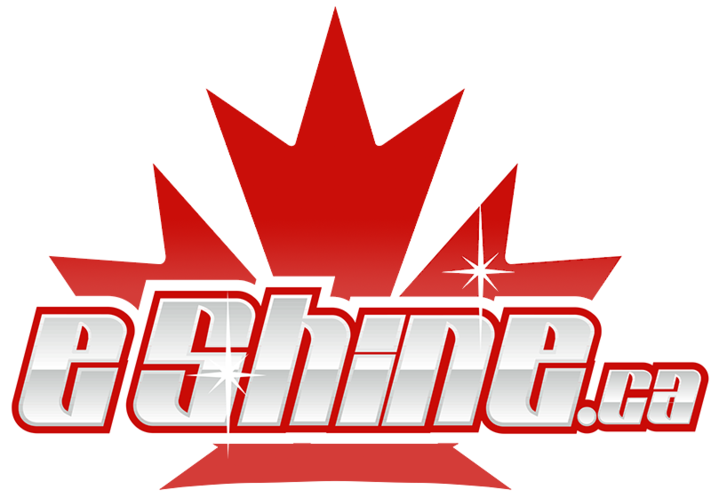Is silicone bad? What is silicone?
The Role Silicone Plays in Car Care Products
By Mike Phillips (Autogeek.net)
One of the most frequent comments I hear when I go to car club meetings and events is that silicone is bad for your car. It's a common myth, from years gone by, that the mere presence of silicone near a car will cause the paint to shrivel up and fall off or prevent it from ever being repainted. These myths are false, but the latter is based on factual problems painters once experienced. The fact is that all modern automotive paints contain silicone as an ingredient to help the paint to spray and flow smoothly.
Most of the concerns people have about silicones and products that contain silicones stem from the days when lacquers were used as the primary car finish. Back then, if the surface wasn't properly prepared, residual silicones on the bodywork or in the shop environment would cause paint defects. The most common silicone induced problem is a small defect referred to as "Fish Eyes".
Fish eyes are small craters that form in the paint finish. Fish eye defects form where the paint piles up in a circle surrounding a point on the surface that contains a contaminant. The reason freshly sprayed paint does this is because contaminants like wax and silicone tend to create high surface tension and do not allow the paint to properly flow and self-level.
Instead of laying down flat, paint moves away from these ingredients, forming a ring around them that has the visual appearance of what is historically described as a fish eye. In severe cases, where the painter does not properly prepare the bodywork for painting, contamination from wax, oils and silicones can cause paint adhesion problems.
Knowledge of paint and other automotive finishes have evolved and grown substantially since the 1950's. The problems painters encountered 50 years ago are more easily addressed with today's modern paint formulas and prepping chemicals. Likewise, the modern paint facility has evolved into a high-tech environment (primarily due to environmental regulations), and paint additives help overcome common flaws.
More importantly, modern paint technicians are educated in their craft. Until the 1970's, there were very few formal training programs available for young men and women entering the automotive repair industry. Today there are certified schools that specialize in formal education for the automotive industry. This includes paint manufacturers, who provide in-depth training for anyone who uses their paint systems.
All professional body shops understand that the cars they repair have been maintained using products that contain waxes, oils and silicone. For this reason, all professional repair facilities perform the necessary preparation work required to insure that the paintwork is free of contaminates before they begin their work. In so doing, the dreaded "fish eyes" will not be a problem.
The preparation work includes using special degreasers and silicone removers that effectively remove these substances from the surface or chemically alter their molecular structure in such a way to insure they pose no problems. If there is ever any question or doubt about the surface to which new paint is going to be applied, painters will use a paint additive to eliminate fish eyes. Interestingly enough, the paint additive that eliminates fish eyes is typically a special silicone additive.
SILICONES USED IN CAR CARE PRODUCTS
There are many kinds of silicones available for use in car care products. They vary in form and functionality. Car care chemists select the best performing silicones to create a desired finish for each kind of car surface.
Silicones are primarily used to modify or enhance a specific characteristic of another ingredient in a polish, wax or protectant formula. Silicones are not used for any characteristic they offer in and of themselves. There are some functions in a car care formula that only silicone can produce or no other ingredient can perform better.
One of the most commonly used features of silicone is its ability to lubricate (improve slip). The use of some types of silicone in a formula acts to make the product easier to apply and buff off. In this way, silicone lubrication helps reduce surface marring (scratches and swirl marks) induced from wiping with bad toweling or applicators. That's a benefit to you.
Chemists also use silicones to create water-in-oil emulsions, reduce emulsion particle size, to stabilize emulsions, and to improve spreading and coverage of wax products. Most modern silicone formulas are water soluble (no oil or petroleum), and are completely inert. The best way to describe most forms of silicone is to think of it as a man-made wax ester. Silicone is created by the reaction generated when you combine fatty acids with polydimethylsiloxane (or other derivatives of the compound).
The fear and confusion surrounding this single ingredient, silicone, is an ongoing problem. Some small car care chemical manufactures create fear, uncertainty and doubt in people's minds by claiming their products contain no harmful silicones, suggesting that silicone is harmful to the paint. This product hype and misinformation spread from person to person, generation to generation, and now-a-days on the Internet, exaggerates the myth that silicones in car care products are harmful. The fact is that the largest and most respected names in the paint and body shop industry, which include 3M and Meguiar's, use silicones in their car care products to make them better.
The facts are indisputable. Silicone is part of the protective system in paint and helps the paint look better and last longer. Silicone cannot harm paint, let alone anything else it is formulated into, or sitting on top of, especially in the form of a coating of wax. Without properly blended silicones, waxes would be difficult to apply and would not have the high gloss and radiance we enjoy.
Original Article





































